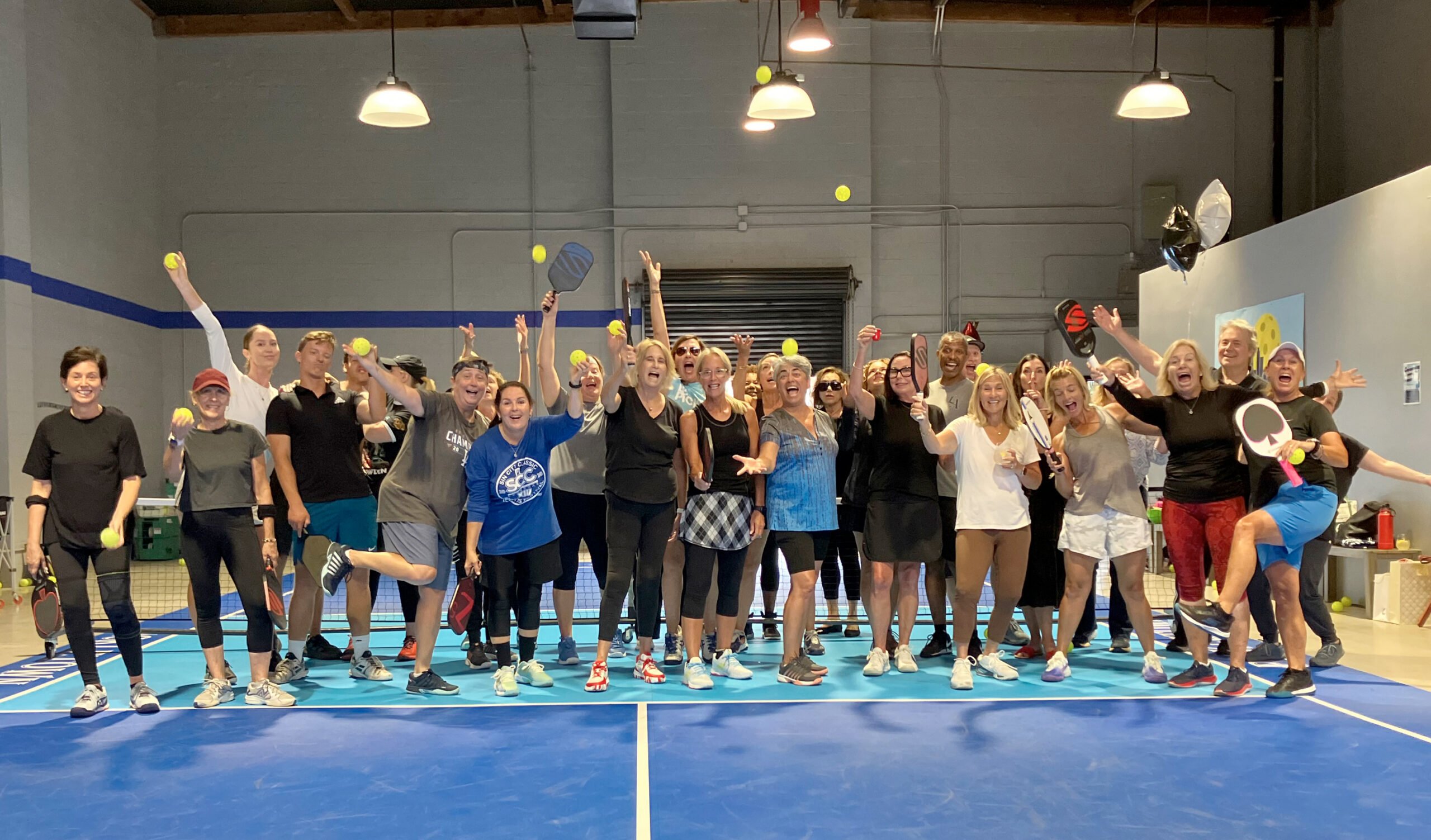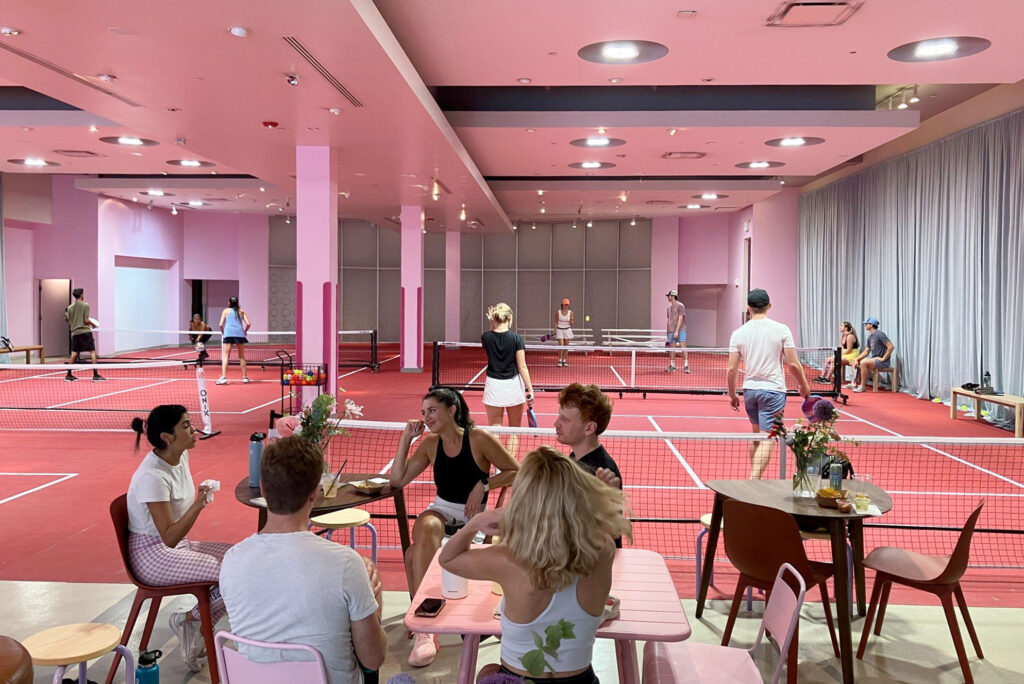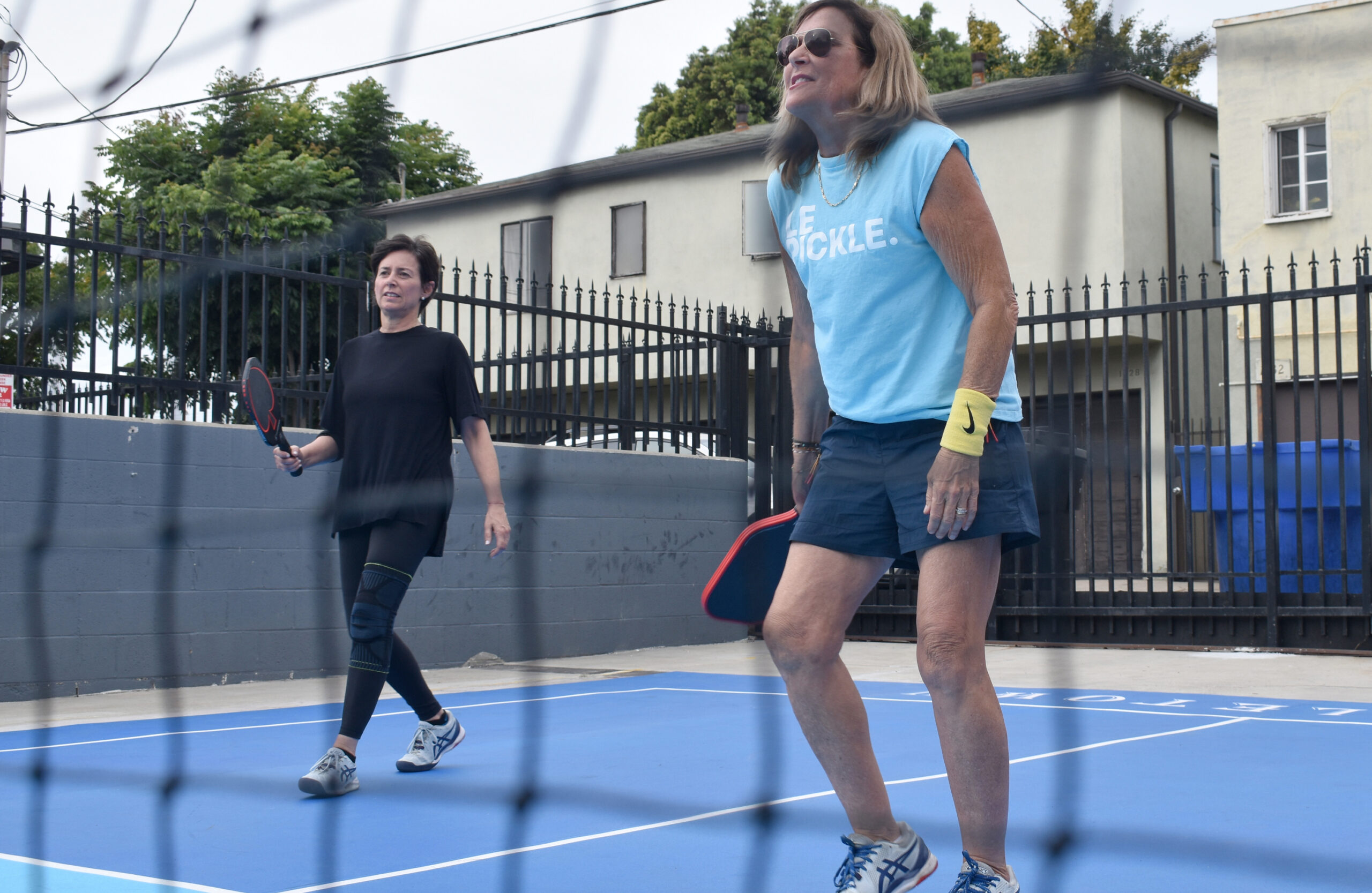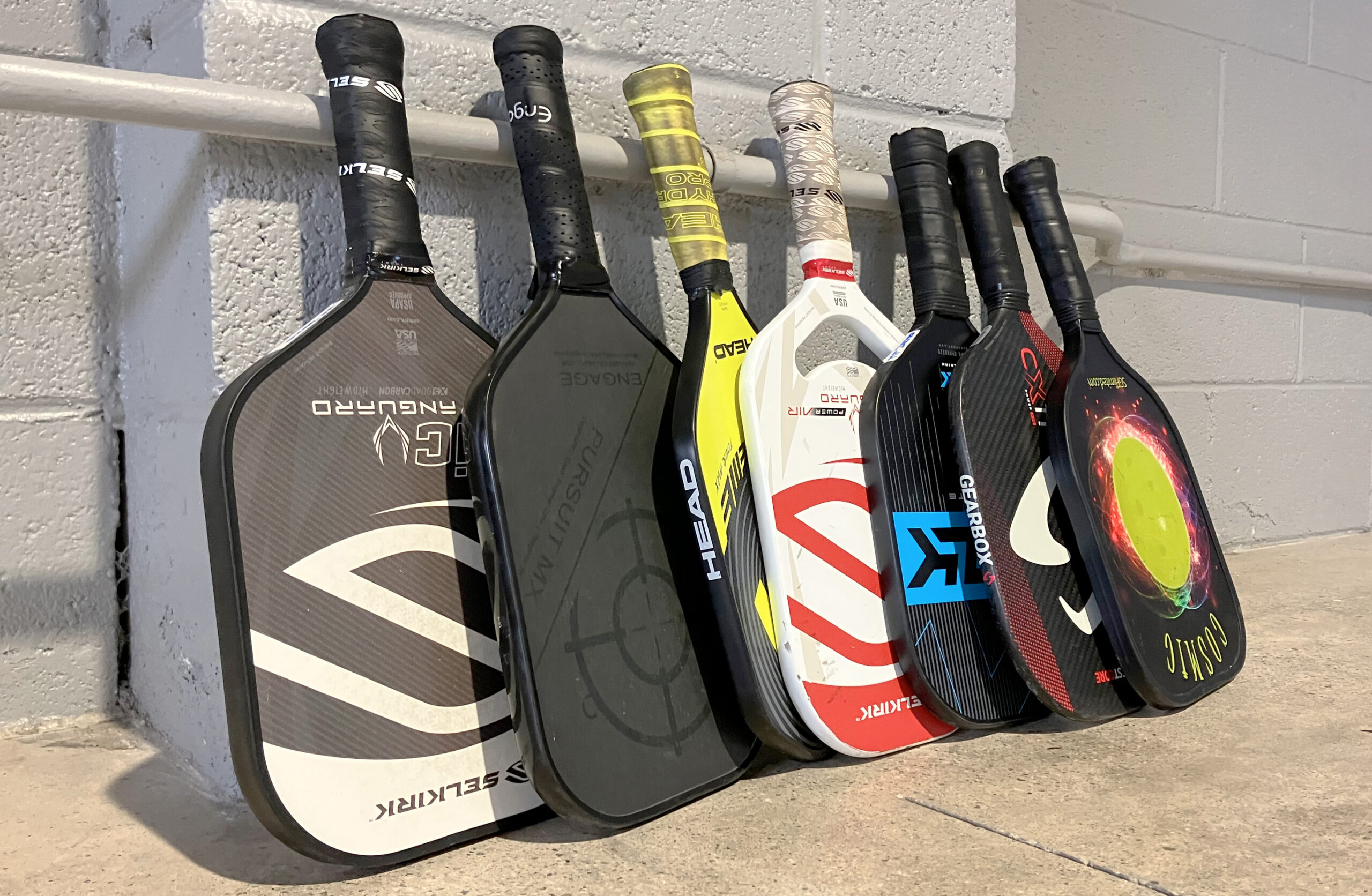"Pickle-what?" is a pretty common response in most attempts to explain the unparalleled explosion in popularity of pickleball to anyone living outside of Santa Monica. And yet it’s the single biggest sports craze sweeping Southern California since the Hula-Hoop. Almost.
Pickleball is a racket or paddle sport that loosely resembles a combination of tennis, basque pelota and that bat-and-ball game you always saw tanned, toned Europeans play on Mediterranean beaches when you were on holiday as a kid. Apparently though, it officially originated on Bainbridge Island in Washington state in 1965 as a children’s backyard game. While the sport has been around for decades, pickleball has now become a national phenomenon with more than 36 million people playing nationally.
The game is played on a court that’s laid out a little bit like a tennis court. It’s 44 feet long and 20 feet wide and is a little bit larger than one quarter of a regulation-sized tennis court. A game can be played with either singles or doubles and players hit a perforated, hollow plastic ball that’s actually exactly the same size as a baseball. Because it’s perforated, like a golf practice "air ball," you can hit it as hard as you like without the worry of accidentally killing your opponent. However, it bounces significantly less than a tennis ball.
"It’s truly a sport for all ages," says Mary Pat Faley, co-founder of Pickletown, former US Professional Tennis Association pro, sports anchor and tennis whisperer. "It’s a sport that grandparents can come and play with their children and their grandchildren. There’s no other sport where you can get three generations having a great time playing on one court."

The paddle is about midway in size between a table tennis paddle and a racquetball racket and has a less rounded design. Like tennis rackets of old, they were originally made of wood, but now, as the sport has grown in popularity, they’re made from all sorts of fancy materials, including the same stuff that NASA probably uses on Mars missions.
The net is just two inches lower than that on a tennis court at 34-inches high and on each side of the net is a 7-foot area known as the non-volley zone, also called the "kitchen," which is probably influenced by the same term being used for the scoring zone labeled "10-off" in shuffleboard. The ball cannot be volleyed (a direct return without a bounce) if your feet are inside of this area. In essence, this keeps the sport from descending into a glorified game of Whack-A-Mole.
The reduced size of the court, together with the minimal bounce and no-volley zone make pickleball a fast-paced game that well and truly tests your reaction speed. It’s an exciting game to both watch and play and thankfully the impact on knees in particular is minimal, which is probably one of the reasons why there has been such a massive take up of the sport with the Generation X demographic.
"Ever since the pandemic, pickleball has exploded in popularity," says Jonathan Neeter, owner of the Pickleball Center at 2505 Wilshire. "You had a real groundswell out there of people playing because there wasn’t a lot else to do. People were playing in backyards or putting up nets in their driveways or patios. You can’t really create a makeshift tennis court, it’s too big, but pickleball you can do," he says.

Neeter says that when many of the extravagant, expensive properties in places like Bel Air and Beverly Hills were built, circa sometime in the 70s, tennis was all the rage and as such almost every multi-million-dollar mansion incorporated a full-size tennis court. However, even the obscenely wealthy can’t escape old age, not for a lack of trying though. Consequently, many are getting converted into pickleball courts, simply because it’s a game that’s healthy, high-intensity, enjoyable and most importantly, doesn’t require quite as much running around as you would on a court four times as big.
Up until very recently, the pickleball-playing public has been severely limited to a few locations in parks dotted around the city of Santa Monica. At weekends especially, at places like Memorial Park, it’s not uncommon to have to wait over an hour for just one game. However, over the last few weeks, that’s all changed with the opening of two very differently styled indoor courts within the downtown area. Moreover, the Pickleball Center, while still stocking tennis equipment, has converted the "secret" practice courts behind the store to purely pickleball.
Isabel Pedrosa is a former Santa Monica resident, who makes the effort to train at Pickletown at least once a week under the guidance of Faley. "The learning curve is super steep, so you can go from zero to being able to play well, entertain yourself and even feel like you are going to be the next champion, super quickly," Pedrosa says.
"A lot of people play tennis in America and I think it’s much easier and faster to be able to enjoy this game. If you’re going to play tennis, it’s way more complicated and much more difficult to get to a respectable level. You know, I would never be as good as this, in just six months, at tennis," she laughs.

While Pickletown focuses very much on quality instruction, if you’re just looking for space to practice and hang out with some pickleball pals, you might want to stick your nose around the door of 1231 Third Street, now known as PicklePop. The impressive 10,000 sq. ft space has been reworked into an indoor pickleball club, complete with a bar and chill out areas and is the brainchild of Stephanie McCaffrey and Erin Robertson.
McCaffrey is a former professional soccer player in the National Women’s Soccer League and Robertson is a fashion designer who attended the Massachusetts College of Art and Design and won season 15 of the Emmy Award-winning reality television series Project Runway in 2016.
"It’s come together beautifully," Robertson said. "This is exactly what we set out to do, to create something that doesn’t exist here and maybe even doesn’t exist anywhere in pickleball, people can play and then they can just hang out."
Thankfully, it’s what Third Street also desperately needed and has helped breathe a little bit back into the Promenade. Both new pickleball courts invariably complement each other with regards to boosting the sport (a phenomenon sometimes called "clustering" and comes from Hotelling’s Model of Spatial Competition) as they both offer the-same-but-slightly-different thing.

Equally as important, it’s getting both the sport and Santa Monica some much needed national and international media coverage. Who knows, with the 2028 Olympics on its way, maybe pickleball will be declared an official Olympic sport within five years and a future US champion could hark from our own sunny, seaside city.
Check out the Pickletown website for times of classes and to book individual lessons as the court is not always open all day. Two courts are available, one indoor and one outdoor with dedicated ball machine spaces. Check out the PicklePop website for details on membership prices and court availability. Three indoor courts are available and it’s open from 7 a.m. to 10 p.m. Monday to Saturday. Lessons are also available with resident pro and Santa Monica local Christine Maddox. Thankfully, the pricing structures for both are very similar. Finally, check out the Pickleball Center’s website, as they also offer lessons on the now dedicated courts tucked away, out of sight, behind the shop.









